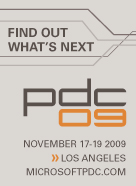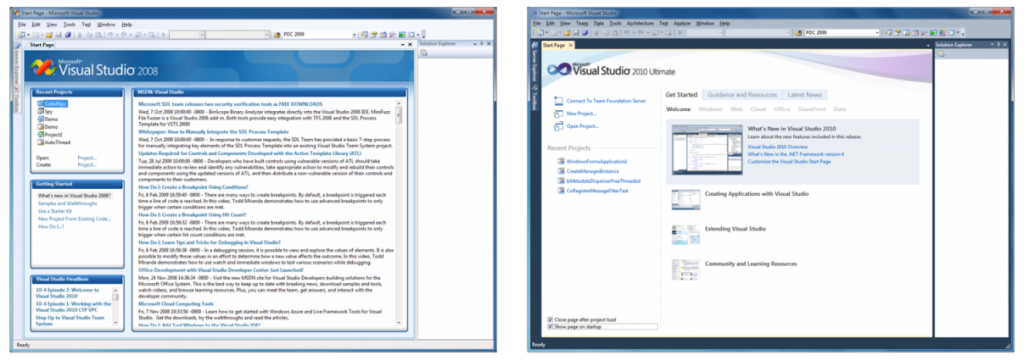Day 1 of PDC 2010 is now over and I had the chance to watch the “WPF vNext” session by Rob Relyea. You can follow this link if you want to watch the video on-demand.
History
Rob starts with an history of Microsoft products from Windows 95 and IE 1.0…
The Blend team was created to build tools that would meet developers and designers needs. They worked closely with the Avalon team (codename for WPF) to make sure the platform was adequate and toolable.
Then the Cider team started their work in order to have a good integration in Visual Studio.
At this point, .Net 3.0 hasn’t shipped yet (it was in 2006), but Microsoft already has the vision of having XAML-based technology in the browser (with what would become Silverlight) and on the phone.
Silverlight & WPF
Silverlight
- focuses on premium media experiences and business applications
- suitable for most other types of application
WPF
- complex ISV (Independent Software Vendors) applications
- key scenarios includes DX and Hwnd interop
Convergence
- bringing key features of WPF into Silverlight
- WPF will support Silverlight hosting in the next version
ISV needs
- great Windows applications
- modern UI
- seamless integration
- rich content
Microsoft adoption of WPF
- Visual Studio 2010
- Expression Studio
- Web Matrix
- Powershell ISE
- more to announce from Microsoft, but not during this PDC…
WPF vNext
- integration of the Ribbon in WPF
- improved collections handling in background thread (simplify the problem related to the UI thread)
- improved UI virtualizing and grouping (right now virtualization is disabled as soon as you group data in an ItemsControl)
- seamless integration: new SilverlightHost control (so we’ll be able to have DeepZoom in WPF !)
- hwnd-based will no longer have airspace problem (for example, a Winforms control is always rendered on top of all other WPF controls).
As a conclusion, it’s good to see Microsoft finally giving some information about the future of WPF. The most important part I guess is to understand that Microsoft is still doing improvements on WPF and positioning WPF as the key technology for building apps with modern UI on Windows. We might have more and more applications switching to Silverlight but I’m sure they are still a lot of need for a technology like WPF which can use the whole power of the Windows OS (wheter it’s interop with native code, DirectX or other technologies).
For more information, you can also check-out a blog post from Pete Brown entitled “The Present and Future of WPF“.


